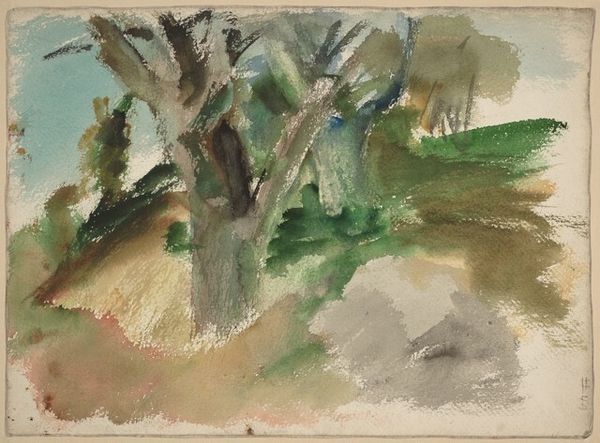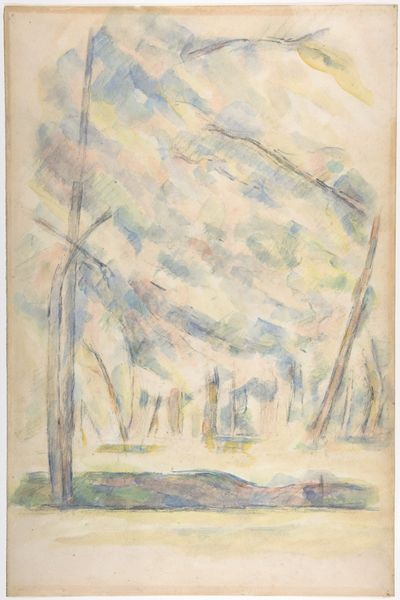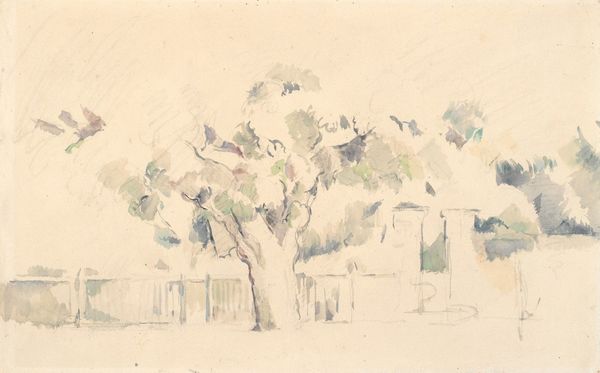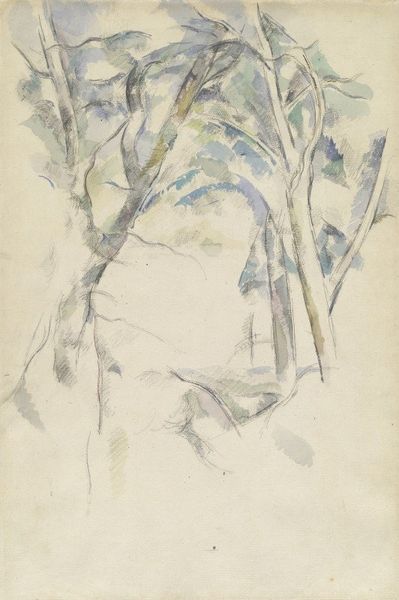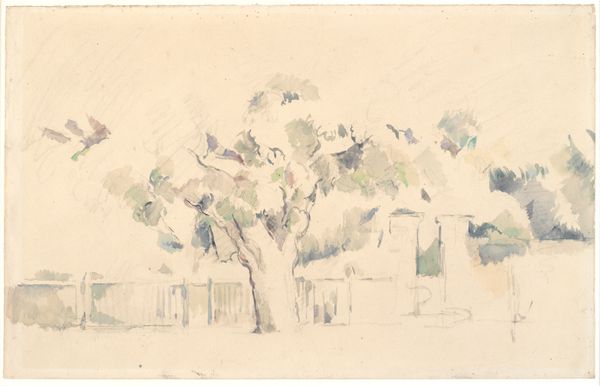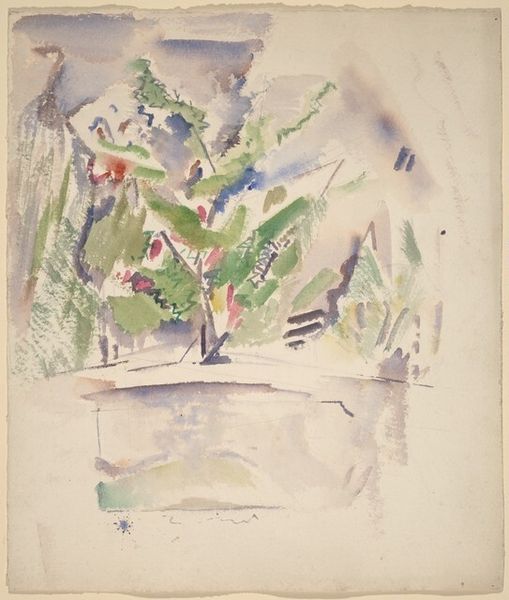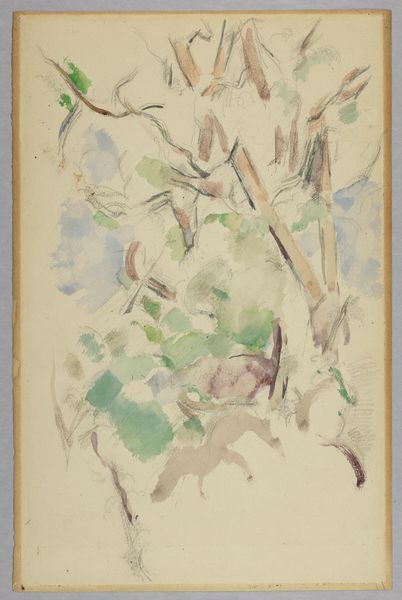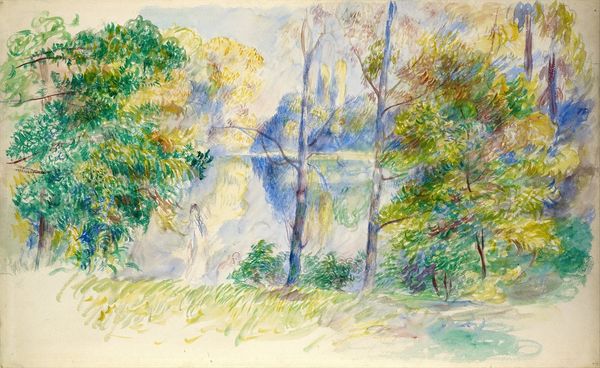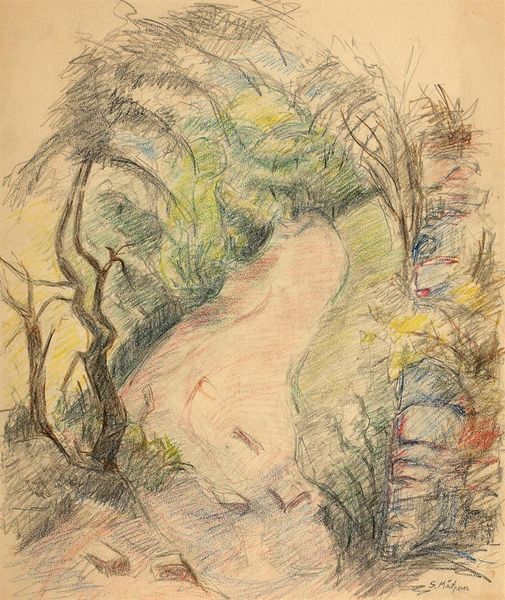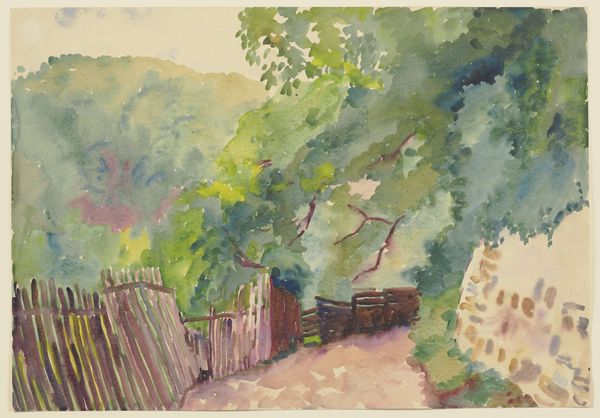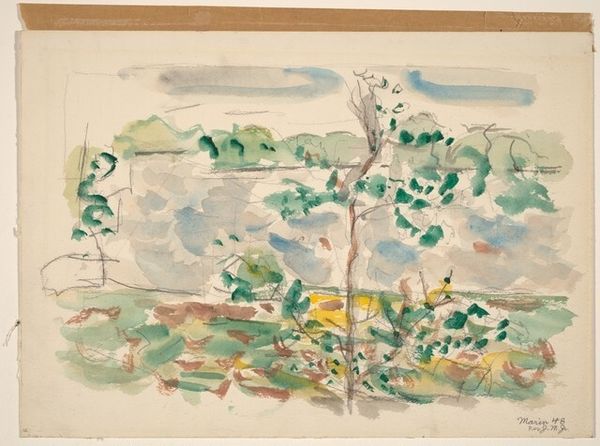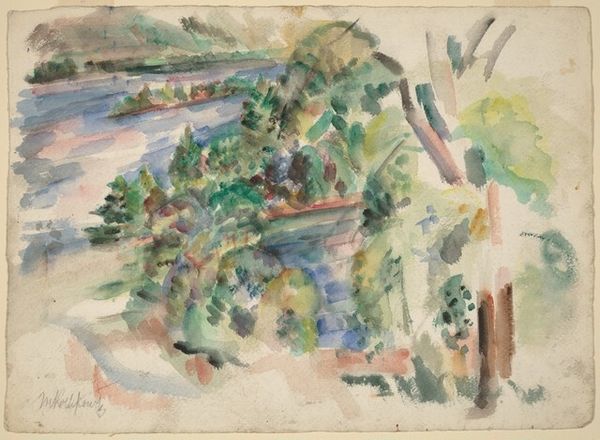
Copyright: Public Domain: Artvee
Paul Cézanne captured the essence of a pistachio tree at Château Noir with watercolor and pencil, emphasizing the bare tree as a central motif. In cultures across the globe, the tree is a potent symbol, bridging the earthly and the divine. Consider the Tree of Life, present in ancient mythologies, symbolizing interconnectedness and growth. Cézanne’s stark portrayal echoes the symbolic barren tree, stripped bare, a symbol of transformation and rebirth. We see this motif recur—from the skeletal trees in Nordic folklore, representing winter's grip and the promise of renewal, to the mystical trees in Eastern traditions, signifying enlightenment. There's a psychological element at play too, in the image's emotional resonance. The stark branches might subconsciously evoke feelings of vulnerability, but also resilience. They suggest a silent narrative of survival, a testament to nature's enduring power. Observe how these bare branches appear time and again, transformed yet familiar, proving that symbols never truly vanish. They are endlessly reborn, shaped by collective memory and reinterpreted across generations.
Comments
No comments
Be the first to comment and join the conversation on the ultimate creative platform.
